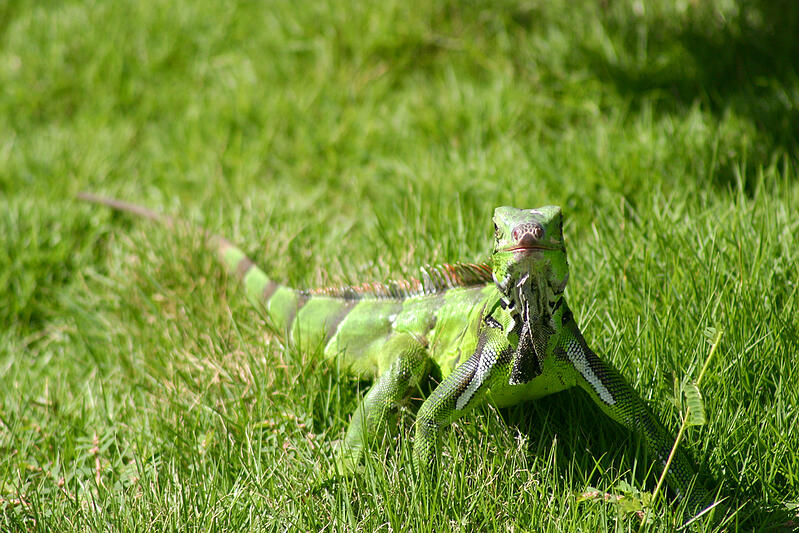
Luckily, scientists have studied sleeping reptiles extensively, and have reported back their findings for the rest of us to discover.
In this article, we cover three species of reptiles and answer the main questions you have about their sleeping patterns: where, when, and how they sleep, as well as their hibernation habits. Read on to learn more!
Ball Pythons
Ball pythons are native to West and Central Africa, but have become of the most common pet snakes kept in the United States.
- Where do they sleep?
Ball pythons like to sleep in enclosed, dark places that they can curl up into. Usually the tighter the crevice they can coil up in, the happier they are.
- When do they sleep?
everythingreptiles.com say “Ball pythons are nocturnal, meaning they are active at night and sleep during the day.”
- How do they sleep?
Ball pythons are serious about their sleep! They snooze for 22 or 23 hours, waking only to stretch, readjust, hunt and eat. These are snakes don’t have eyelids, so they actually sleep with their eyes open! They have one clear, protective scale called a spectacle that covers each eye to keep out debris.
Studies have shown that snakes have sleep stages that are similar to humans’, even entering phases of REM sleep!
- Hibernation habits
Ball pythons don’t hibernate, per se, but they can be known to sleep for weeks at a time when they are shedding their skin. This is an exhausting process, and they need quite a lot of rest!
Turtles
Turtles are reptiles of the order Testudines that have evolved to have a hard, bone-like shell around their body.
- Where do they sleep?
The answer depends on whether the species of turtle is aquatic or land-based! Most aquatic and semi-aquatic turtles burrow in the mud to sleep. Terrestrial turtles like to burrow in piles of leaves, stumps, and dense vegetation.
- When do they sleep?
Most turtles are diurnal (active during the day and use nighttime to sleep—just like humans!)
- How do they sleep?
Turtles don’t go through the same deep stages of sleep that humans do. They generally sleep in smaller chunks, about 4-7 hours each night, in addition to spending much of the say resting.
Tortoises, on the other hand, sleep for much longer. Some species, such as the Galapagos Tortoise, sleep between 16 and 18 hours a day!
- Hibernation habits
The technical term for hibernation in cold-blooded animals is brumation, and this is how they make it though the cold winters in environments with temperate climates. Both aquatic and terrestrial turtles brumate from roughly October to April, depending on temperatures.
Leopard Geckos
In captivity, leopard geckos are known for being sweet and docile, and have become one of the most popular pets for first-time reptile owners. But what about in the wild?
- Where do they sleep?
Leopard geckos like to hide when they sleep, either under tree bark, in a rock crevice, in a pile of leaves, or anywhere they can feel protected from predators.
- When do they sleep?
Leopard geckos are nocturnal, meaning they sleep during the day and are active at night. Specifically, they are crepuscular, meaning they are most active at dawn and dusk.
- How do they sleep?
Leopard geckos can sleep for up to 12 hours straight. These lizards do have eyelids, which they close when asleep.
- Hibernation habits
Like turtles, leopard geckos brumate in a state of semi-dormancy (as opposed to bears, who are fully dormant for the winter). Because it gets too cold in the winter for the geckos to find food, they brumate to conserve energy. Brumation lasts from around September to when spring begins.
Summary
Just like no two species of mammals have the same sleeping habits and needs, all reptiles are unique when it comes to their periods of rest.
Whether they curl up in crevices, burrow deep into mud, or hibernate for months, these three reptiles sleeping behaviors are fascinating!
Which of these facts about how reptiles sleep surprised you the most? Let us know in the comments below!
Alaska Sleep Clinic’s website is the 4th most visited sleep education source on the internet i the World, with over 5 million visitors in both 2018 and 2019. Sign up today by clicking the link below.












